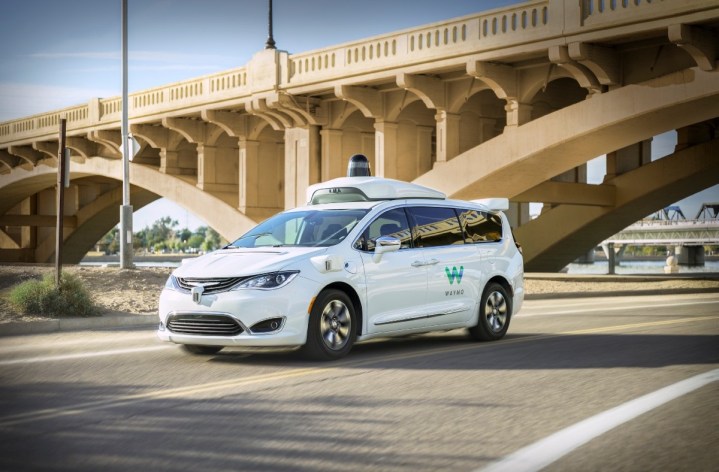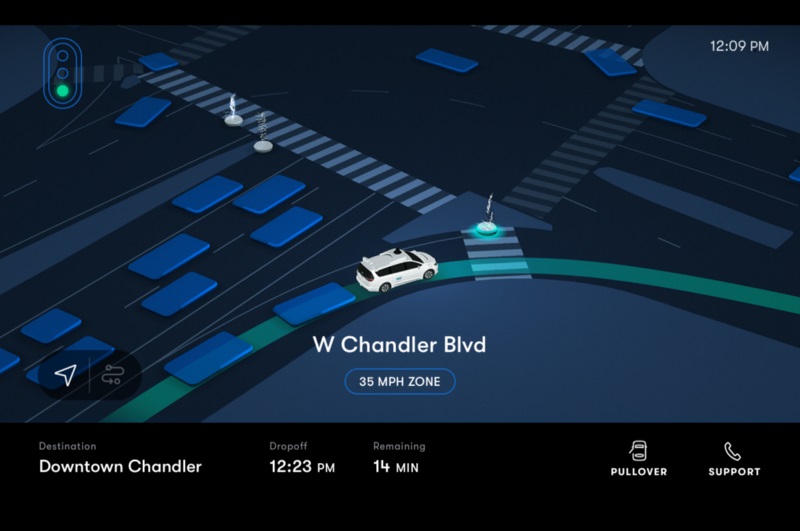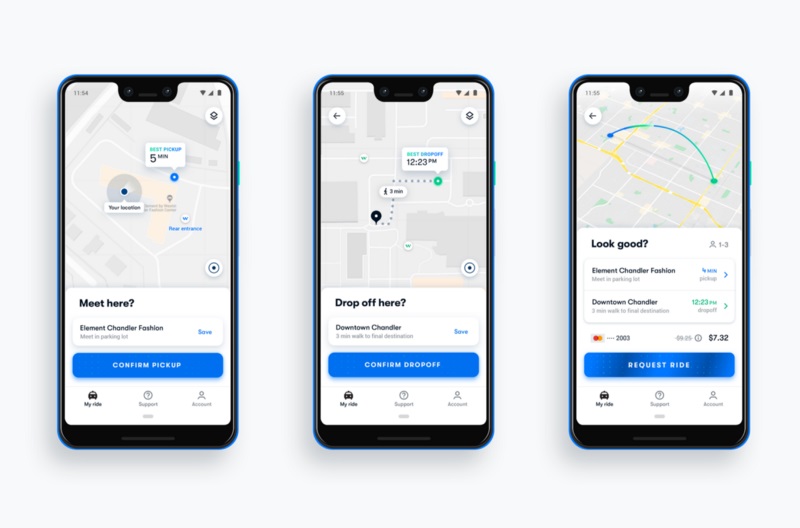
Waymo’s self-driving car program has reached a significant milestone. On December 5, the company began charging users in and around Phoenix, Arizona, for rides in its autonomous cars. Aptly named Waymo One, the program makes Waymo the first company in America to generate revenue by giving rides in autonomous cars. It’s a step towards recouping the billions of dollars spent on developing the technology over the past 10 years.
Waymo One works a lot like Uber in the sense that customers request a ride 24 hours a day, seven days a week, by using a purpose-designed smartphone application. After opening the app, they select their pick-up point and their destination, and the app shows how long it will take for a car to show up plus how much the ride will cost. Users can then accept the ride or cancel it. Once on the road, the app tracks the ride, provides the estimated time of arrival, and immediately puts riders in touch with a support agent if they have any questions. Users need to store their credit card information in the app to pay for rides.
As of writing, Waymo One is only available in a 100-mile zone in Phoenix suburbs Chandler, Tempe, Mesa, and Gilbert. Additional details remain few and far between; the company notably hasn’t revealed how many cars will initially participate in Waymo One. Pricing remains vague, too, but Reuters reports it’s about on par with what Uber and Lyft charge. The publication took an early ride in a Waymo One car and paid $7.59 for a 15-minute, three-mile ride.
Limiting the scope of the autonomous ridesharing service allows Waymo to maintain tight control over what is still a new and largely unproven technology. Restricting where autonomous cars can go ensures they will stay in areas with adequate mapping, and roads that won’t present any challenges the cars can’t handle. Waymo hopes to gradually expand the service as it maps roads in new areas. The service launches with Chrysler Pacifica Hybrid minivans (pictured above), but Waymo also plans to add the Jaguar I-Pace electric SUV to its fleet. Every prototype has a human backup driver on-board to take over in case something goes wrong.
Not everyone can request a ride. The first group of passengers are being drawn from Waymo’s existing Early Rider Program, which consists of about 400 volunteer families in the Phoenix area that have been riding in test cars for about a year. The firm notes up to three adults and a child can ride in each car at the same time.
“Over time, we hope to make Waymo One available to even more members of the public as we add vehicles and drive in more places. Self-driving technology is new to many, so we’re proceeding carefully with the comfort and convenience of our riders in mind,” Waymo CEO John Krafcik wrote in a Medium post.
Eliminating human backup drivers could save a lot of money, so Waymo will likely move to get rid of them as quickly as possible. That could translate into cheaper fares for passengers. But the biggest benefactor will likely be Waymo, which will be able to increase profits.
Uber and Lyft are working hard to catch up with Waymo, as are automakers like Ford, General Motors, and Mercedes-Benz parent Daimler. But if other companies take the same gradual approach as Waymo, it could be a long time before self-driving cars become a common sight on the road.





